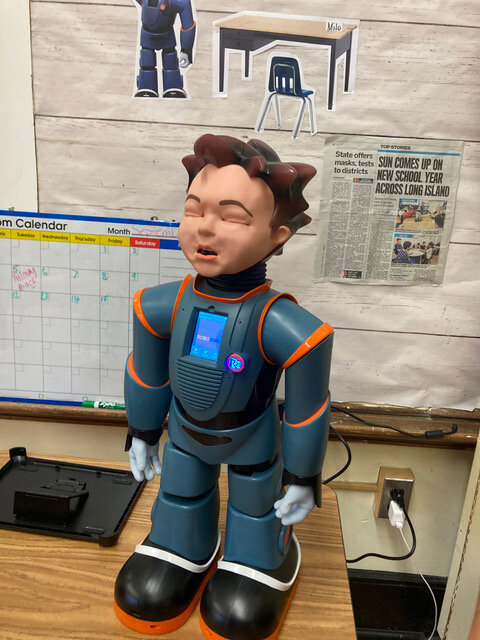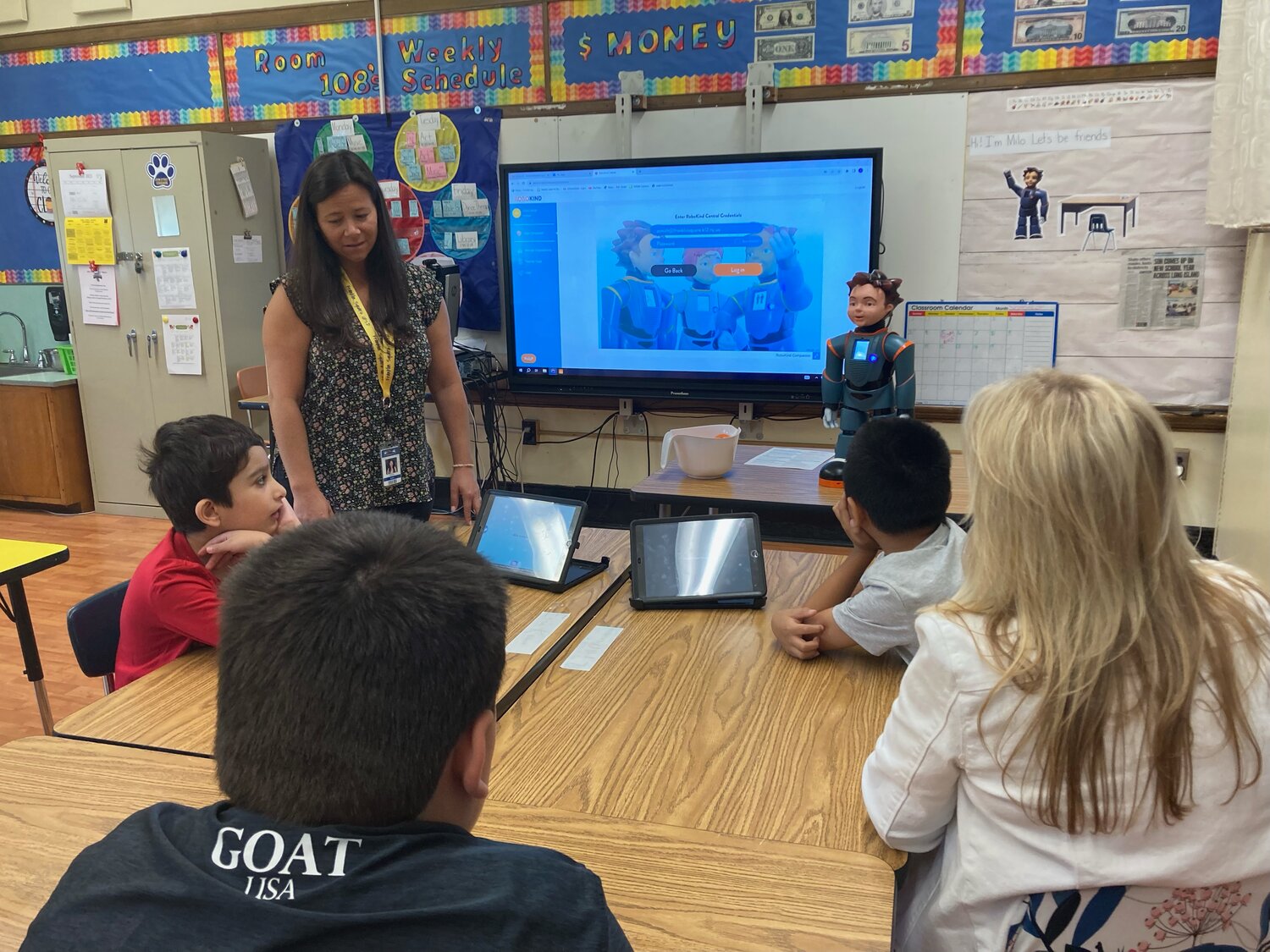Elementary class learns social cues with robot
When students in Alana Smith’s third-grade class arrive every morning at the John Street School in Franklin Square, they are greeted by Milo — a robot that teaches social cues and emotions, and soon will teach academic disciplines as well.
Milo the robot, created by RoboKind, cost the Franklin Square School District $25,000, which includes teacher training. Milo will first be used in Smith’s class, but can be borrowed by various classes that have a use for the robot. The school is the first on Long Island to use a robot of its kind.
“We did a lot of training to bring him here,” Pamela Taylor, the district’s director of pupil personnel services, said.
District administrators first heard about Milo while attending a conference earlier this year, and during the summer, decided to bring the robot in, making it a quick turnaround to introduce the robot to the classroom.
Milo will initially be used in intensive support classes, as part of a program for third-graders, who have the greatest need for help learning social cues and how to deal with their emotions.
According to RoboKind’s website, “Autistic children often have difficulty recognizing emotions and facial expressions relative to typically developing children.
However, all children can benefit from learning better social and emotional skills so that they can better operate in the adult world, educators said.
“We’re looking to expand, because he’s appropriate for all learners,” Taylor said.
To start a lesson, Smith turns Milo on and asks how the students are feeling. They say, “Happy,” but accidentally click the angry face. So, Milo responds by saying, “Everyone gets angry sometimes,” and proceeds to teach the students techniques to calm down.
When the technique is to take a breath, Milo breathes with them. When the technique is to count to 10, Milo counts with them. Taking a break is another technique, which the students learn through a video of a human acting out the emotion and the technique. This helps them become more confident in their own emotional skills.
Milo also comes with an online avatar that other classrooms can use to teach these skills. RoboKind also provides worksheets for each lesson, and Milo is intentionally slow, so that the students can learn with him.
“You have to slow it down,” Smith said. “That’s what gets us calm.”
The robot can also dance, talk, interact with the students, recognize facial expressions, and follow a wide range of commands from the teacher’s iPad. Milo doesn’t store any visual data, so the robot can’t recognize the students. However, students can complete profiles in Milo’s online classroom, allowing teachers to track their progress.
Milo’s eyes can open and close, the robot’s mouth, tongue and cheeks move, and Milo can raise and bend his arms, and walk.
“He’s definitely built for that kind of interaction,” Smith said. “We know the students are going to want to go over and see and touch and explore.”









